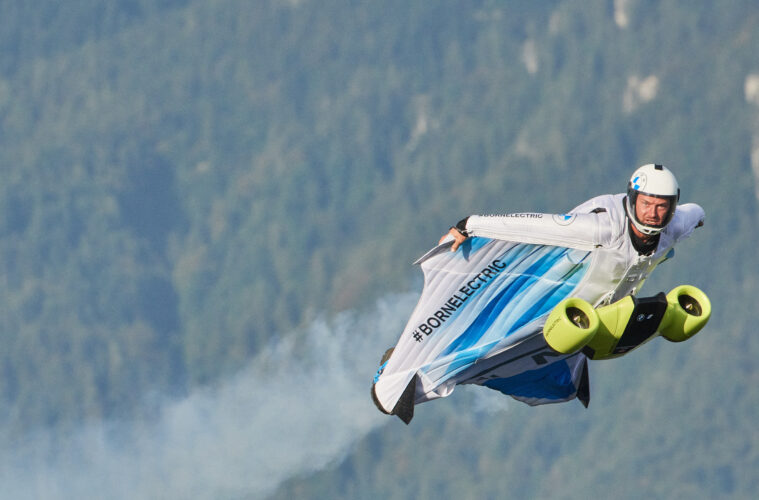Together with Designworks and professional wingsuit pilot Peter Salzmann, BMW i has developed an electric-powered wingsuit, which has been successfully flown over mountains in Austria. Erica Jamieson reports
After jumping from a helicopter 3,000 metres up, air sportsman and professional base jumper Peter Salzmann completed the world’s first human flight powered by electric wingsuit in November.
The suit, propelled by two 13cm carbon impellers with an overall output of 15kw, allowed Salzmann to gain altitude and soar above the “Three Brothers” mountain peak in Austria.
Mid-flight, the suit reached a top speed of 186 mph. For a sport that typically celebrates top horizontal speeds of about 60 mph, the “electrified wingsuit” will create incredible new opportunities in daredevil airsports – and “Pay for Peril” adventure tourism.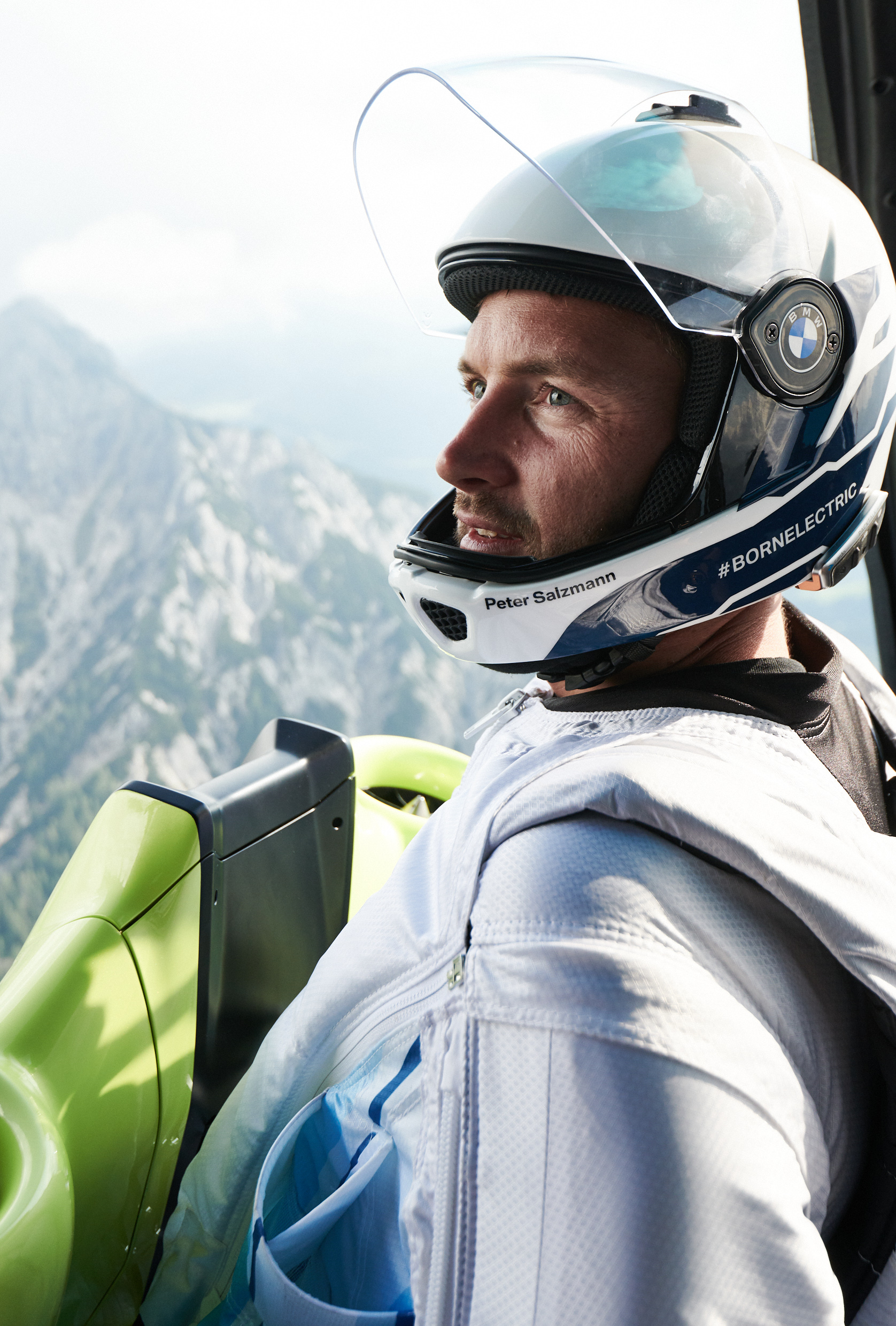 “At the time, I was developing suits for skydiving and basejumping with a friend and basejumping mentor,” Salzmann tells BMW. “One of them was a supporting motor – and it’s an idea I just couldn’t shake. I found the idea of being able to jump from my local mountain wearing the wingsuit and land in my garden fascinating.”
“At the time, I was developing suits for skydiving and basejumping with a friend and basejumping mentor,” Salzmann tells BMW. “One of them was a supporting motor – and it’s an idea I just couldn’t shake. I found the idea of being able to jump from my local mountain wearing the wingsuit and land in my garden fascinating.”
Salzmann brought the concept to BMW and, in 2017, they got to work, creating a suit agile enough for easy maneuverability, with the power to climb mountains. 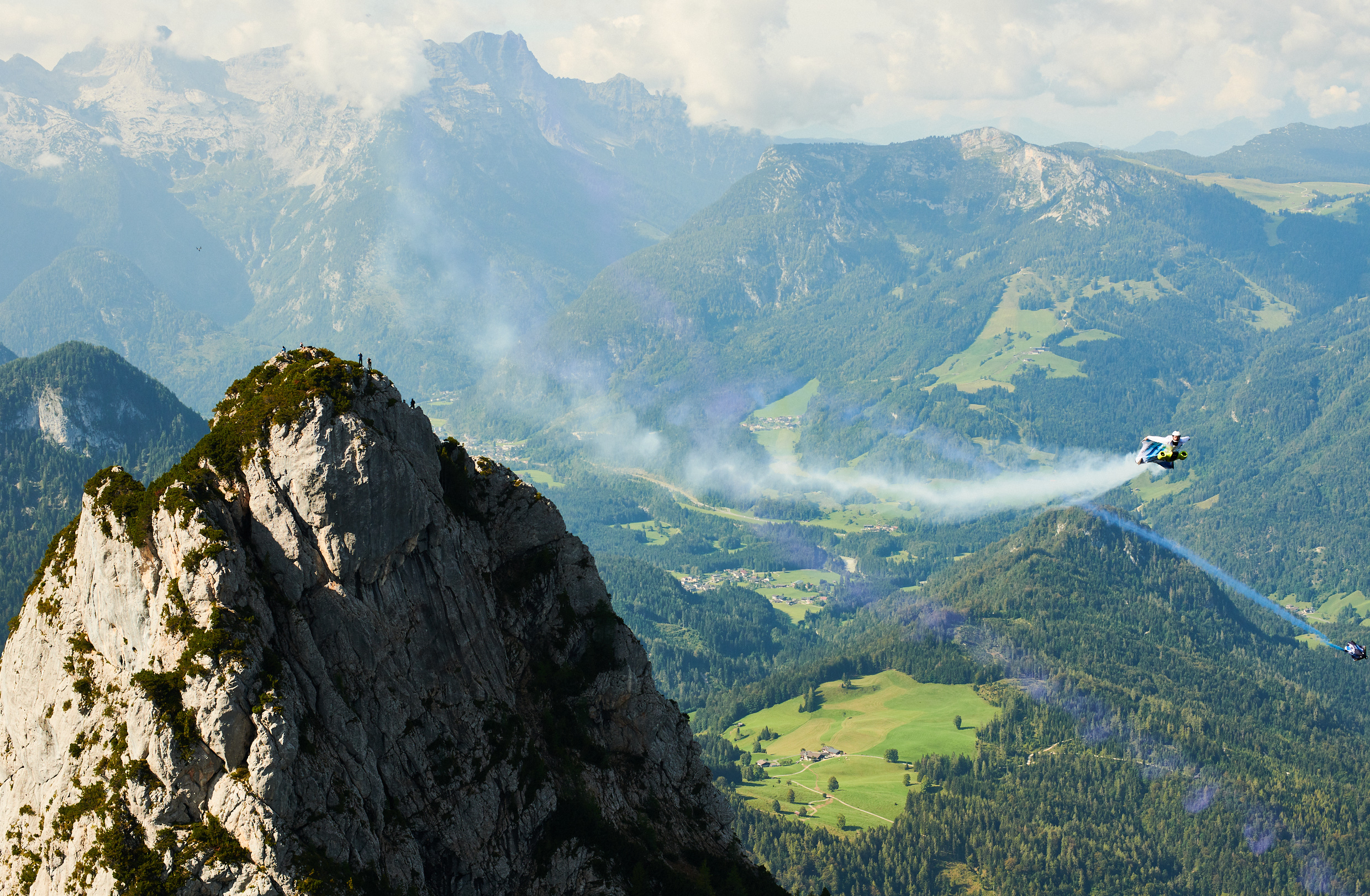 “Our future-oriented approach with electric propulsion systems and innovative materials and technologies were a perfect fit for Peter Salzmann’s unusual but fascinating idea,” says Stefan Ponikva, vice-president of brand experience at BMW i, of the brand’s decision to partner with Salzmann.
“Our future-oriented approach with electric propulsion systems and innovative materials and technologies were a perfect fit for Peter Salzmann’s unusual but fascinating idea,” says Stefan Ponikva, vice-president of brand experience at BMW i, of the brand’s decision to partner with Salzmann.
“In my opinion, Peter Salzmann perfectly embodies the attitude of the BMW i brand with his unique vision, his passion and his courage. I was also very impressed by his physical effort, combined with in-depth technical knowledge and a very clear understanding of the brand,” Ponikva adds. Resembling “a futuristic mini-submarine”, the final design is made from lightweight carbon fibre and aluminium, with a thumb and finger-operated throttle on the left sleeve. The electric propulsion system is powered by a 50V lithium battery, attached to the suit’s chestplate, and can produce thrust for up to 15 minutes.
Resembling “a futuristic mini-submarine”, the final design is made from lightweight carbon fibre and aluminium, with a thumb and finger-operated throttle on the left sleeve. The electric propulsion system is powered by a 50V lithium battery, attached to the suit’s chestplate, and can produce thrust for up to 15 minutes. In alignment with the BMW i brand, the automaker’s line of fully electric cars, the wingsuit can be fuelled by renewable energy.
In alignment with the BMW i brand, the automaker’s line of fully electric cars, the wingsuit can be fuelled by renewable energy.

“Sustainability is very important to me, and something I try to live my everyday life by. I enjoy nature from the air and on the ground – that’s why I aim to consistently follow the path of sustainability even when it comes to mobility,” Salzmann tells BMW.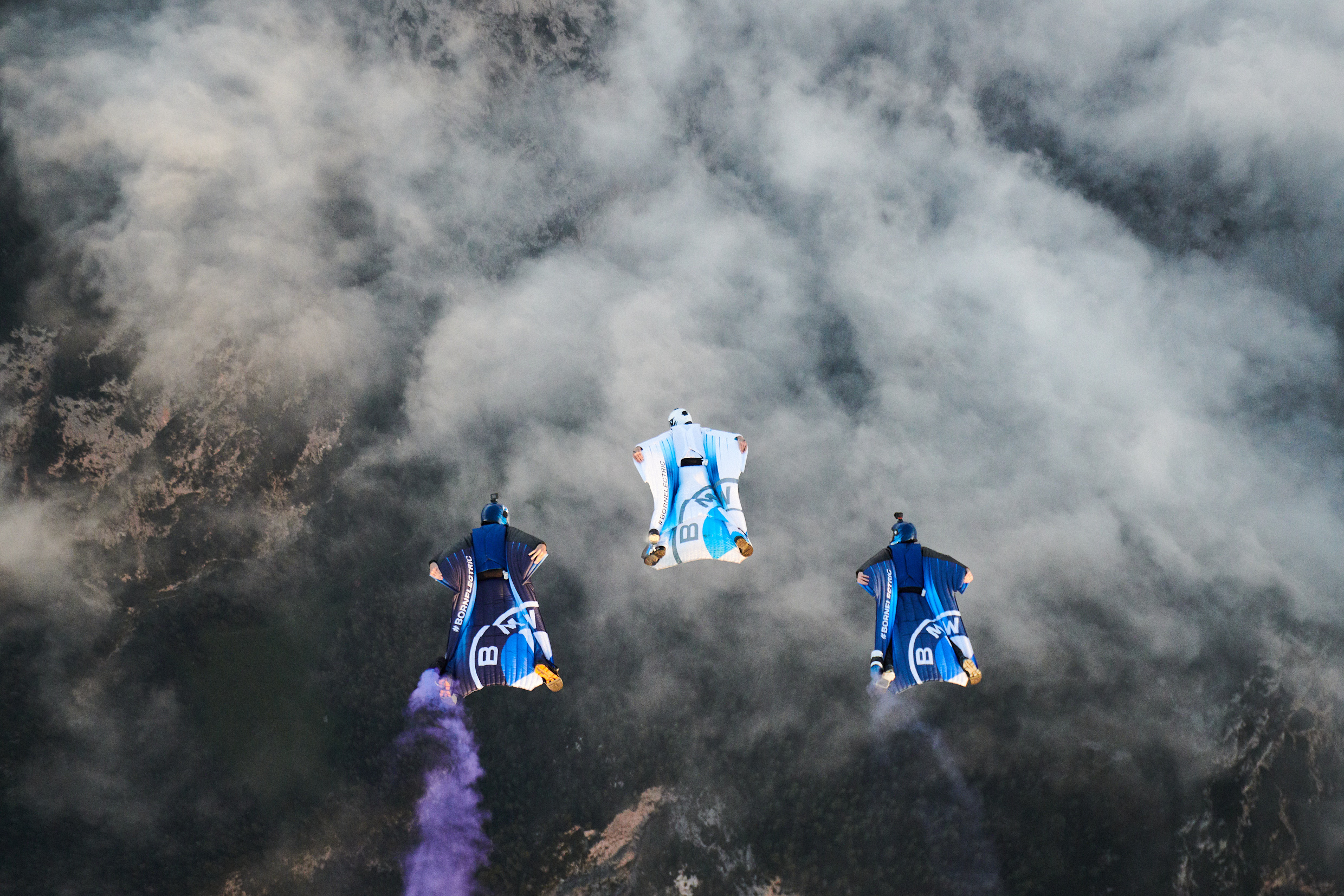 The suit was tested in BMW’s horizontal wind tunnel, AEROLAB, and in a vertical wind tunnel in Sweden. An initial design prototype, with 40 per cent additional power output, was scrapped in favour of lighter design and improved freedom of movement.
The suit was tested in BMW’s horizontal wind tunnel, AEROLAB, and in a vertical wind tunnel in Sweden. An initial design prototype, with 40 per cent additional power output, was scrapped in favour of lighter design and improved freedom of movement.
The electric wingsuit was originally slated to debut in South Korea in spring 2020, a plan delayed by the pandemic. The Drei Brüder, or “Three Brothers”, peaks in the Hohe Tauern Austrian mountain range, close to Salzmann’s childhood home, were selected as a replacement location.
The maiden voyage marked the first edition of BMW’s #NEXTGen 2020 series, showcasing new technologies and vehicles that envision next-generation mobility.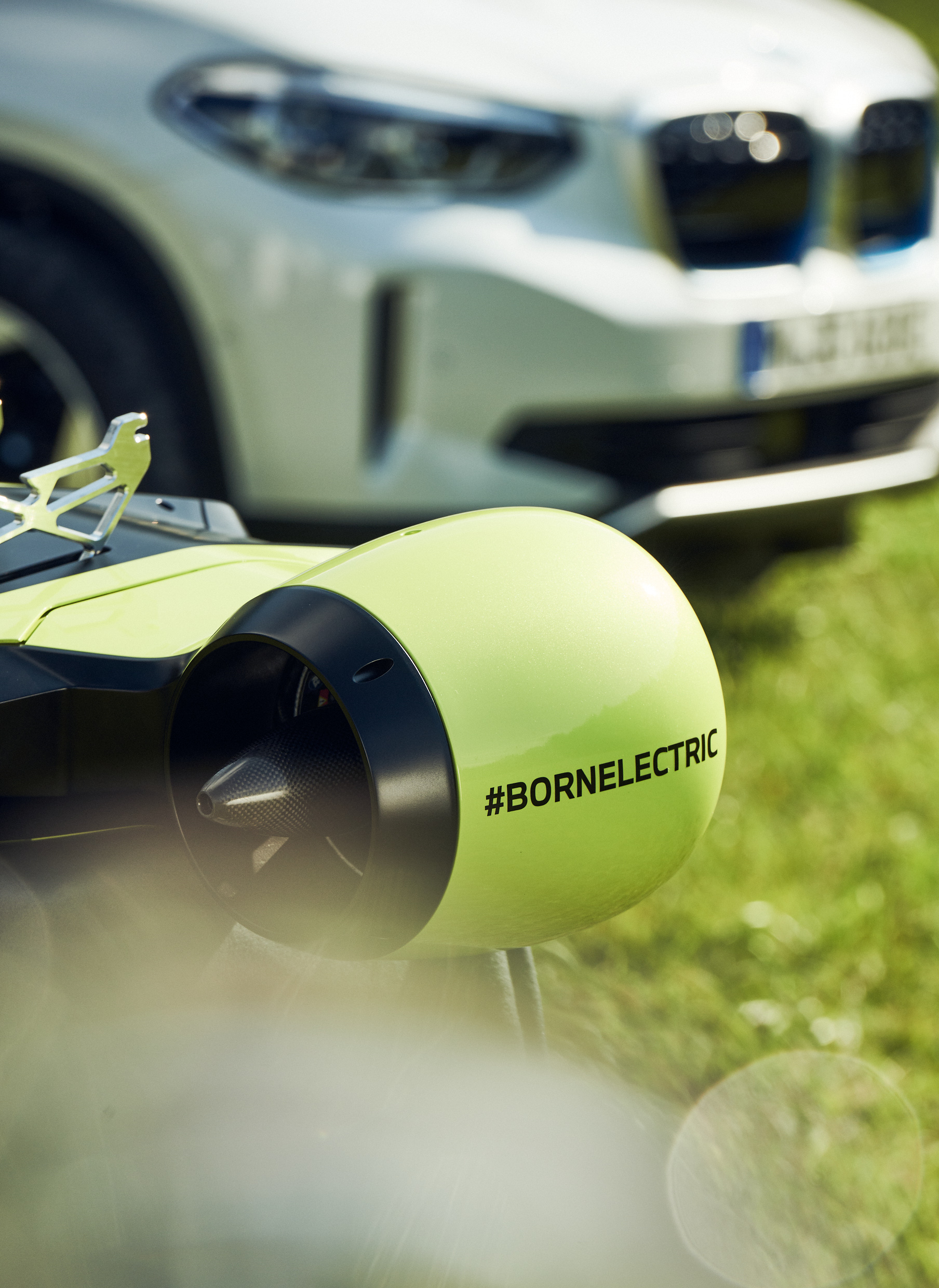 To prepare for the flight, Salzmann completed specialised training to develop his core, neck, and shoulder muscles, in order to hold himself in the right position for the duration of the flight. With the first flight under his belt, Salzmann has already set his eyes on new goals – flying between high rise buildings in South Korea.
To prepare for the flight, Salzmann completed specialised training to develop his core, neck, and shoulder muscles, in order to hold himself in the right position for the duration of the flight. With the first flight under his belt, Salzmann has already set his eyes on new goals – flying between high rise buildings in South Korea.
“Flying is freedom. It’s the ultimate expression of striving for the unknown and discovering new horizons,” says Salzmann.

